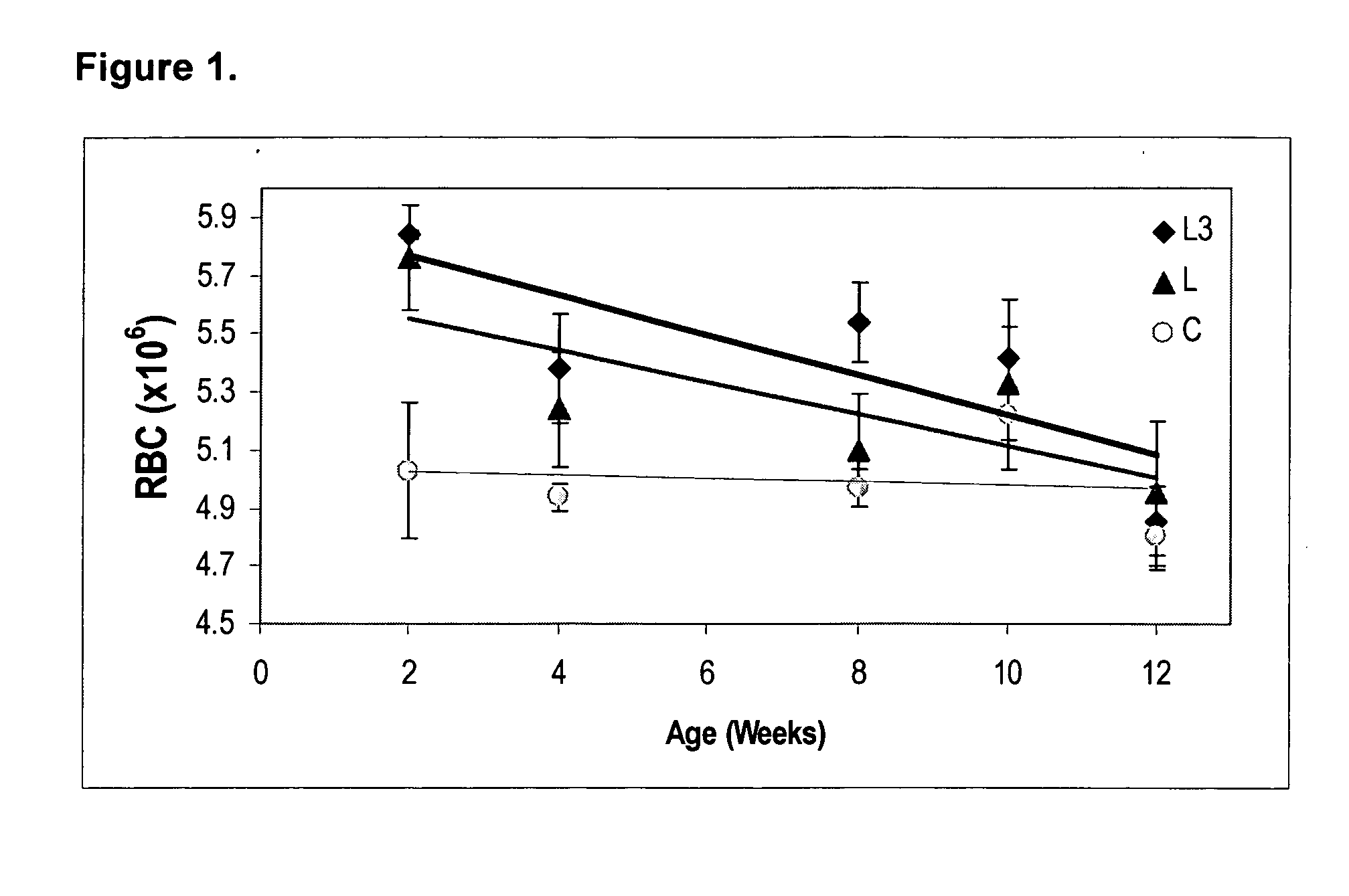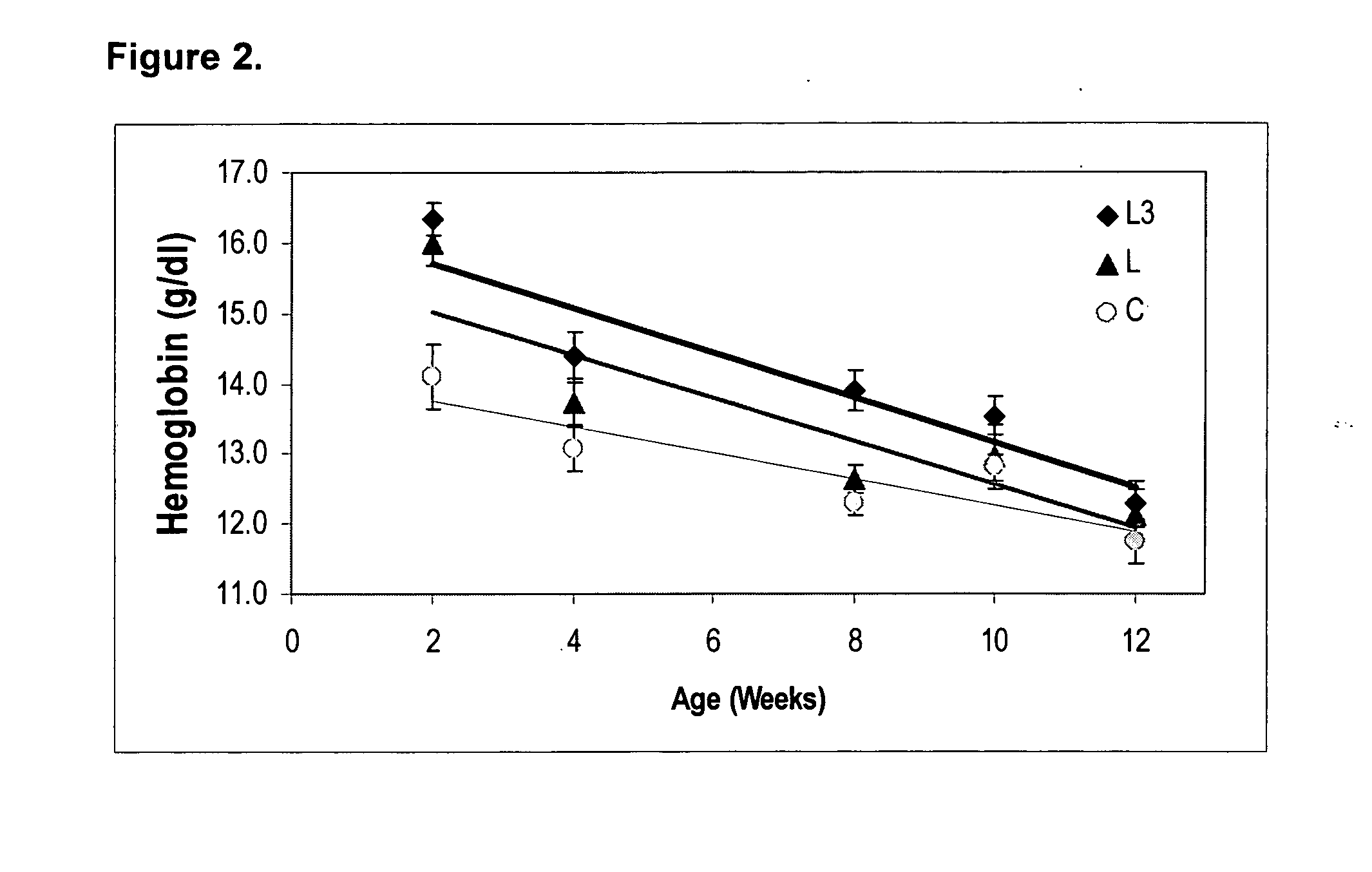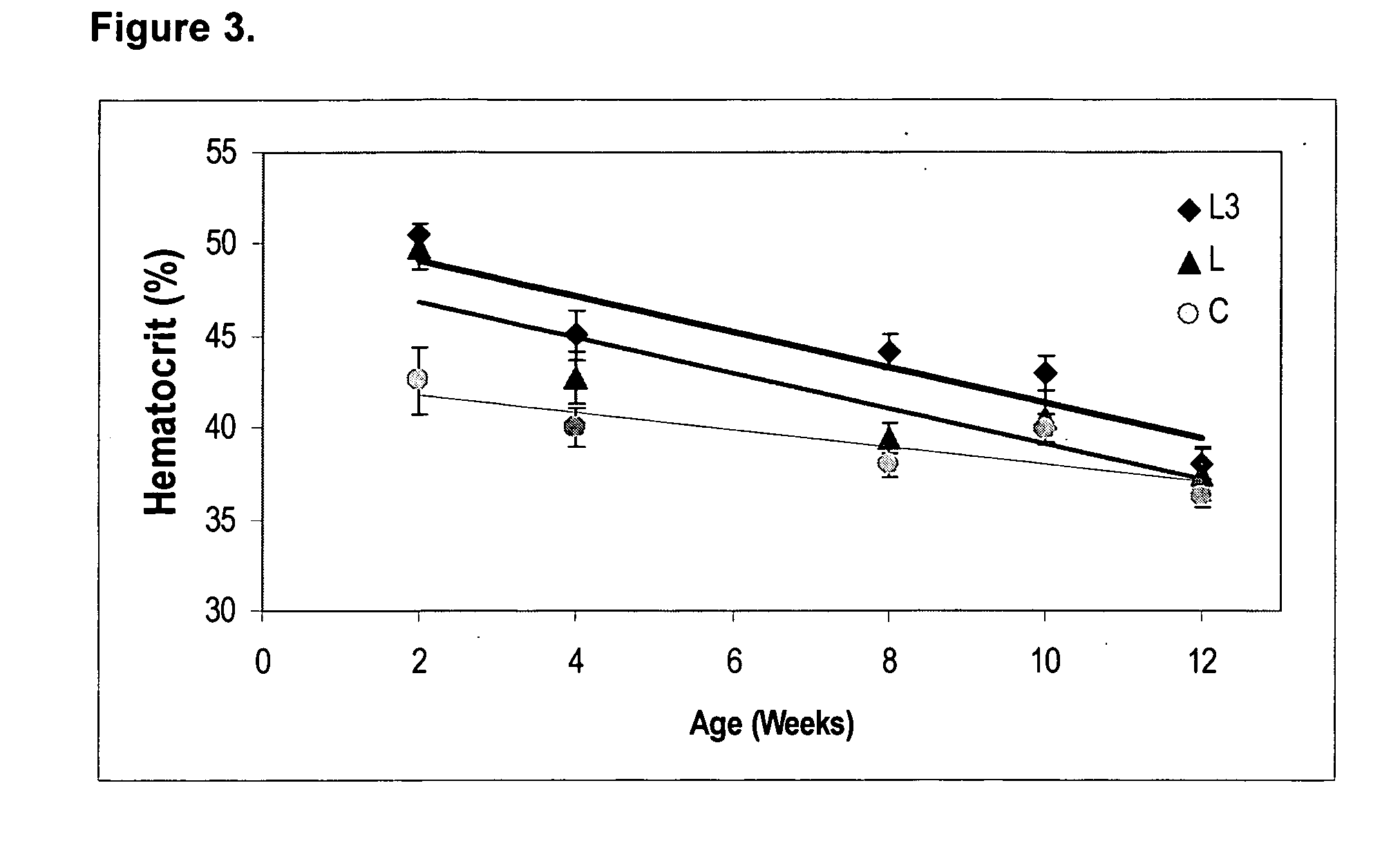Method for preventing or treating anemia
- Summary
- Abstract
- Description
- Claims
- Application Information
AI Technical Summary
Benefits of technology
Problems solved by technology
Method used
Image
Examples
example 1
[0067] This example describes the results of DHA and ARA supplementation in treating or preventing anemia in neonatal baboons.
[0068] Growth outcomes were assessed using animal body weight, head circumference and crown-rump length. Statistical analyses revealed no significant differences among diet treatments (p>0.37). Anthropometric measurements indicated normal neonatal growth and physical development.
[0069] Selected hematologic data from 2 to 12 weeks of age (mean ±SD) are shown in Tables 2-5.
TABLE 2Clinical hematology reference values at 2 weeks of age forLCPUFA supplemented term baboon neonates (range, mean ± SD).DietCLL3WBC (×103) 4.6-9.66.73 ± 0.916.67 ± 0.317.30 ± 2.52RBC (×105) 4.4-6.045.03 ± 0.475.76 ± 0.365.84 ± 0.03Hemoglobin (g / dl)14.10 ± 0.94 16.00 ± 0.66 16.33 ± 0.47 12.7-16.7Hematocrit (%) 37.2-42.58 ± 3.69 49.87 ± 2.44 50.53 ± 0.23 52.0MCV (fl) 80.1-89.484.80 ± 3.80 86.53 ± 1.29 86.53 ± 0.85 MCH (pg) 26.2-28.828.05 ± 1.25 27.77 ± 0.55 28.00 ± 0.78 MCHC (g / dl) 31....
PUM
| Property | Measurement | Unit |
|---|---|---|
| Time | aaaaa | aaaaa |
| Mass | aaaaa | aaaaa |
| Mass | aaaaa | aaaaa |
Abstract
Description
Claims
Application Information
 Login to View More
Login to View More - R&D
- Intellectual Property
- Life Sciences
- Materials
- Tech Scout
- Unparalleled Data Quality
- Higher Quality Content
- 60% Fewer Hallucinations
Browse by: Latest US Patents, China's latest patents, Technical Efficacy Thesaurus, Application Domain, Technology Topic, Popular Technical Reports.
© 2025 PatSnap. All rights reserved.Legal|Privacy policy|Modern Slavery Act Transparency Statement|Sitemap|About US| Contact US: help@patsnap.com



